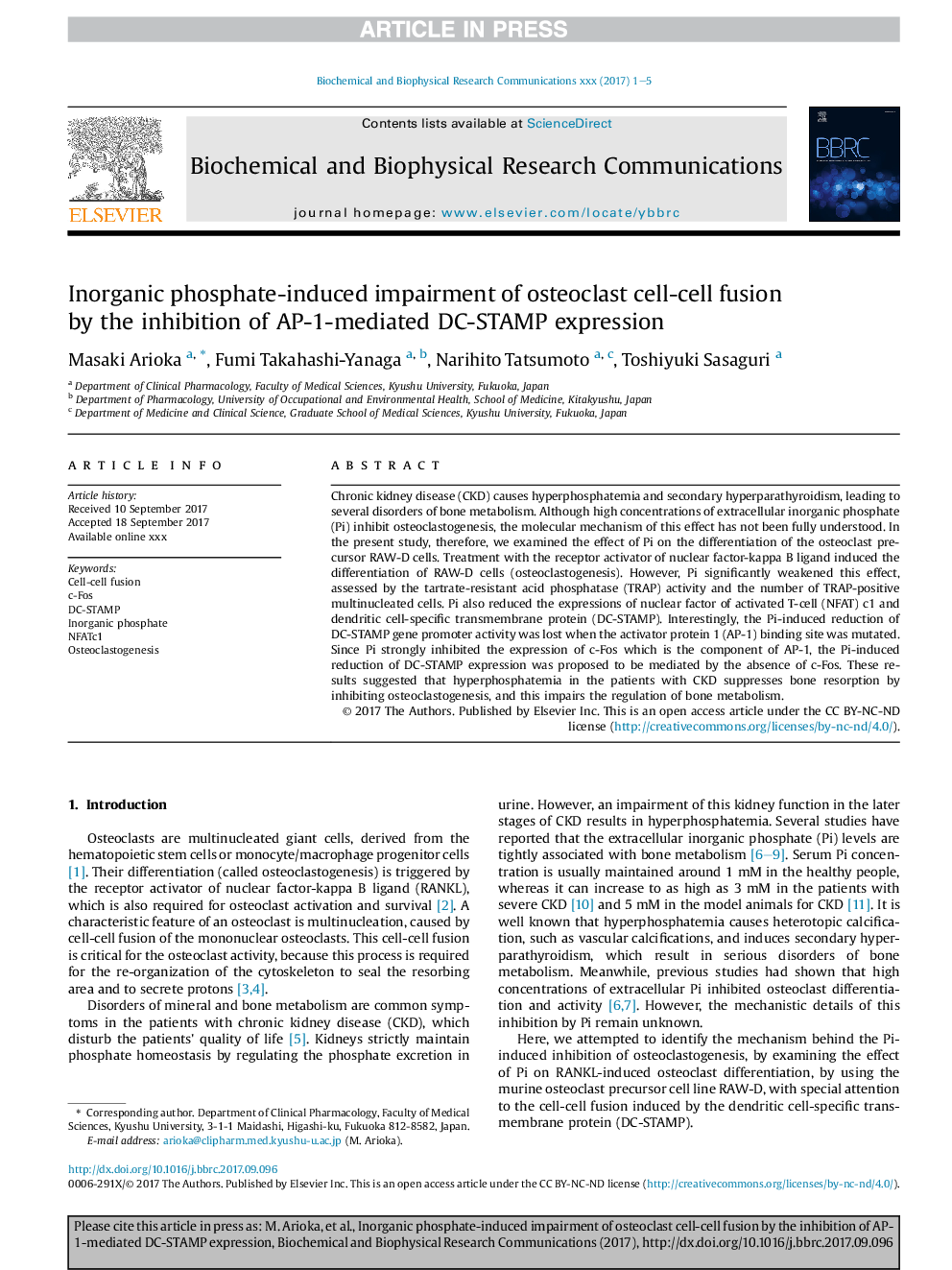| Article ID | Journal | Published Year | Pages | File Type |
|---|---|---|---|---|
| 5504596 | Biochemical and Biophysical Research Communications | 2017 | 5 Pages |
Abstract
Chronic kidney disease (CKD) causes hyperphosphatemia and secondary hyperparathyroidism, leading to several disorders of bone metabolism. Although high concentrations of extracellular inorganic phosphate (Pi) inhibit osteoclastogenesis, the molecular mechanism of this effect has not been fully understood. In the present study, therefore, we examined the effect of Pi on the differentiation of the osteoclast precursor RAW-D cells. Treatment with the receptor activator of nuclear factor-kappa B ligand induced the differentiation of RAW-D cells (osteoclastogenesis). However, Pi significantly weakened this effect, assessed by the tartrate-resistant acid phosphatase (TRAP) activity and the number of TRAP-positive multinucleated cells. Pi also reduced the expressions of nuclear factor of activated T-cell (NFAT) c1 and dendritic cell-specific transmembrane protein (DC-STAMP). Interestingly, the Pi-induced reduction of DC-STAMP gene promoter activity was lost when the activator protein 1 (AP-1) binding site was mutated. Since Pi strongly inhibited the expression of c-Fos which is the component of AP-1, the Pi-induced reduction of DC-STAMP expression was proposed to be mediated by the absence of c-Fos. These results suggested that hyperphosphatemia in the patients with CKD suppresses bone resorption by inhibiting osteoclastogenesis, and this impairs the regulation of bone metabolism.
Related Topics
Life Sciences
Biochemistry, Genetics and Molecular Biology
Biochemistry
Authors
Masaki Arioka, Fumi Takahashi-Yanaga, Narihito Tatsumoto, Toshiyuki Sasaguri,
